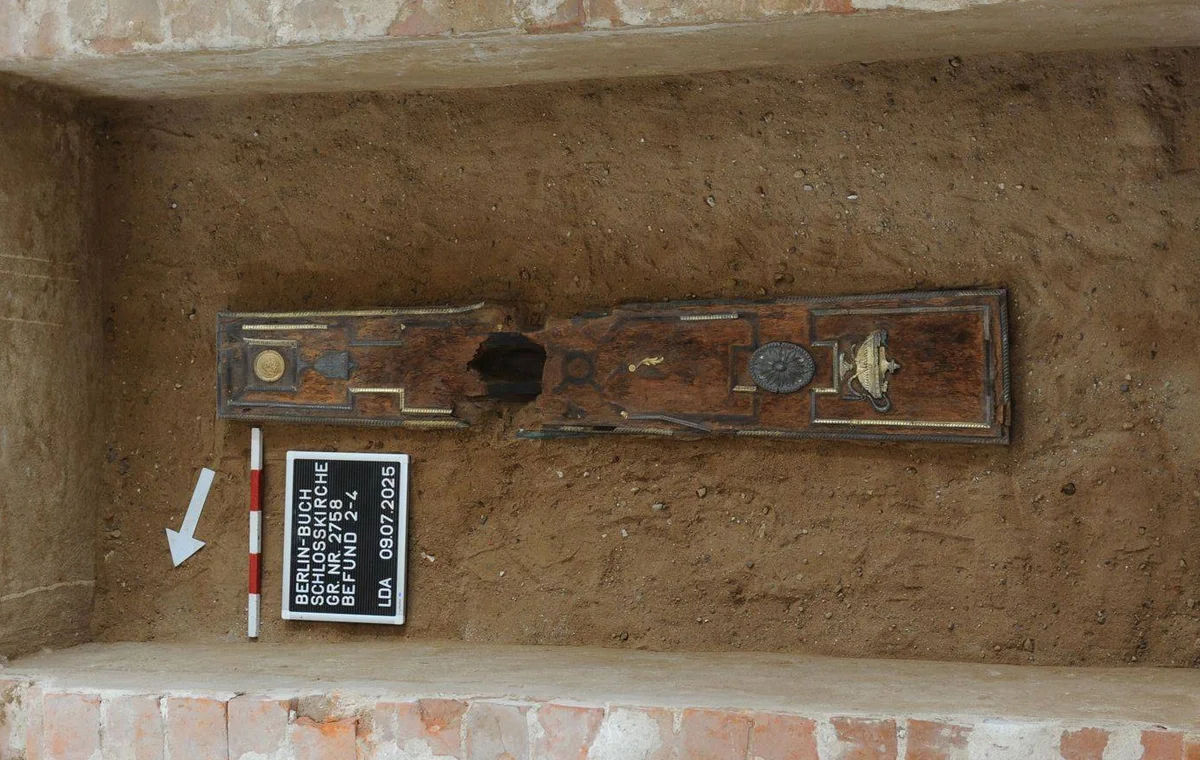Archaeologists from the Berlin State Office for Monument Protection have uncovered a tomb during renovation works at the historic Buch Castle Church.
The tomb is believed to have belonged to Countess Julie von Voß, a bigamous morganatic spouse of King Frederick William II of Prussia.
In 1783, Julie von Voß became lady-in-waiting to the Prussian queen, Frederika Louisa of Hesse-Darmstadt. She was persuaded to marry Frederick on condition that the queen’s consent should be gained to a left-handed marriage, with the ceremony taking place in the chapel of Charlottenburg Palace on the 7th of April 1787.
Sadly, she died just two years later in 1789 at the age of 22 from Tuberculosis (TB), also known colloquially as the “white death”, or historically as consumption.
Recent renovation works in the Buch Castle Church have revealed a well-preserved wooden coffin decorated with gilded moldings and neoclassical medallions. The coffin was found alone in a rectangular brick-lined crypt, matching written text of Julie von Voß requesting to be buried alone in the church (where she was born in 1766).
Sebastian Heber of the State Office for Monument Protection, said: “The find is extraordinary: The burial provides us with valuable insights into an exceptional female burial at the end of the 18th century.”
“To be absolutely certain, the coffin would have to be opened and DNA tests conducted on the skeleton,” explained a spokeswoman for the State Office for the Preservation of Historical Monuments. However, to preserve the peace of the grave and prevent further damage to the fragile coffin, this will not be carried out.
Header Image Credit : Gunnar Nath/Landesdenkmalamt /dpa
Sources : State Office for Monument Protection





